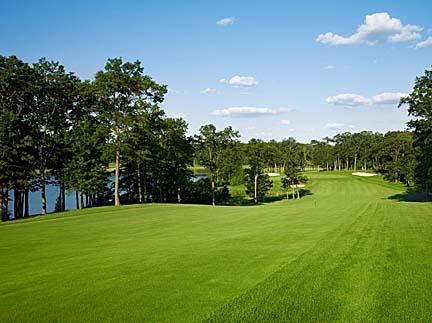 Summers with above-average amounts of rainfall often result in areas of Kentucky bluegrass that turn yellowish. The cause, other than that the problem appears to be linked to too much rain, is unknown according to university researchers.
Summers with above-average amounts of rainfall often result in areas of Kentucky bluegrass that turn yellowish. The cause, other than that the problem appears to be linked to too much rain, is unknown according to university researchers.Scientists at the University of Nebraska noted the problem in late summer in 2011 and again this year. The symptoms arise in Kentucky bluegrass only, but not all cultivars, and manifest when soil temperatures are at their peak.
What researchers there are sure of is that the chlorotic conditions appear to affect only young leaves, leading them to conclude that the off color issue is not linked to nitrogen deficiencies. According to information on the Penn State such symptoms could be related to deficiencies in nitrogen or iron, and note that applications of iron sulfate or chelated iron typically result in greening of turf within a matter of a few hours.
In yellowing Kentucky bluegrass in Nebraska, researchers noted no lesions on the leaf blades, and conclude with colleagues in Pennsylvania that iron deficiencies might be to blame.
The problem appears to mostly aesthetic with no noticeable long-term effects on turf health.
Researchers suggest reducing irrigation and improving drainage, including increased aerification in affected areas and avoid use of fungicides, herbicides or insecticides on visually stressed areas until the symptoms have disappeared.

